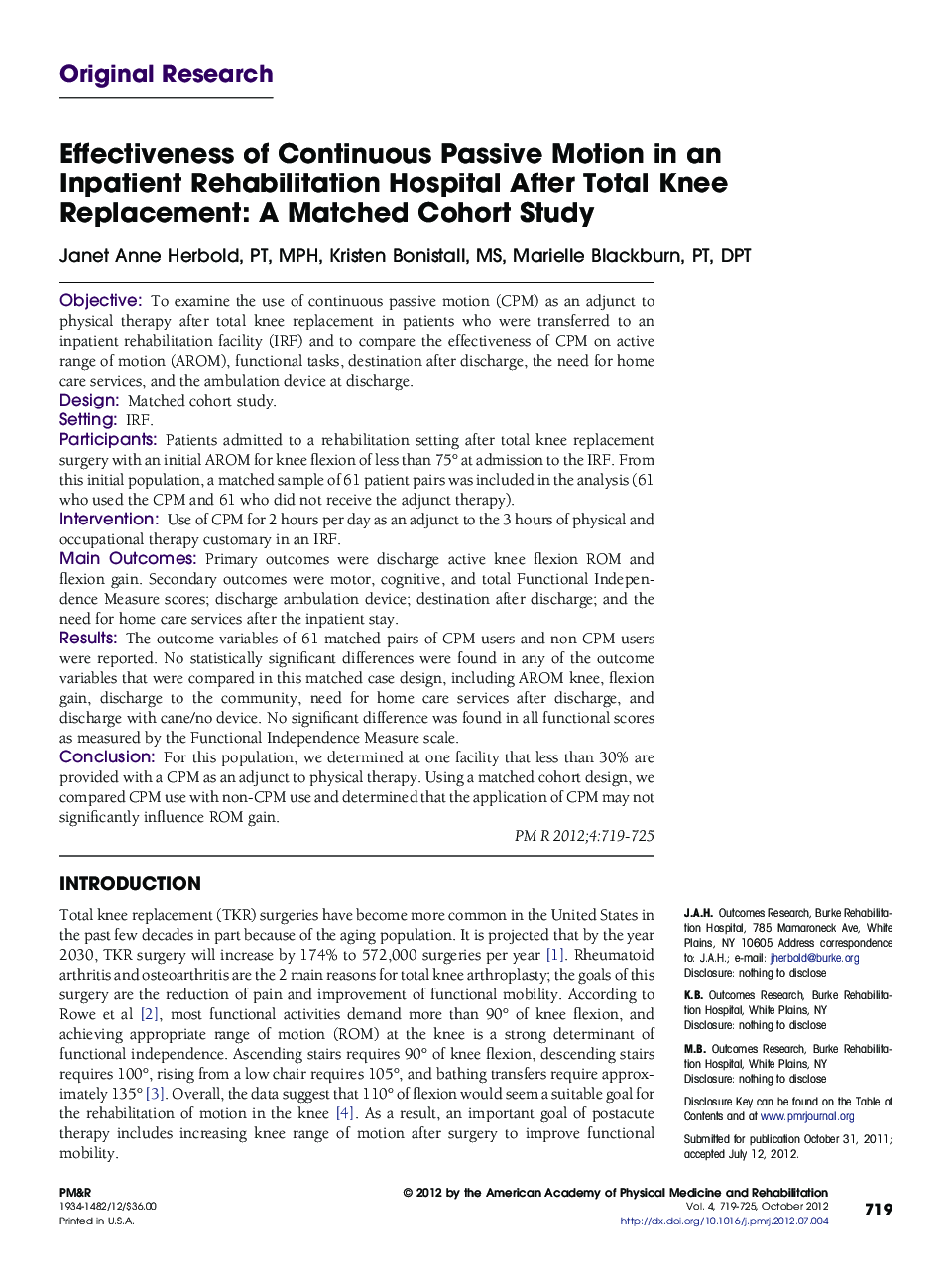| Article ID | Journal | Published Year | Pages | File Type |
|---|---|---|---|---|
| 2712541 | PM&R | 2012 | 7 Pages |
ObjectiveTo examine the use of continuous passive motion (CPM) as an adjunct to physical therapy after total knee replacement in patients who were transferred to an inpatient rehabilitation facility (IRF) and to compare the effectiveness of CPM on active range of motion (AROM), functional tasks, destination after discharge, the need for home care services, and the ambulation device at discharge.DesignMatched cohort study.SettingIRF.ParticipantsPatients admitted to a rehabilitation setting after total knee replacement surgery with an initial AROM for knee flexion of less than 75° at admission to the IRF. From this initial population, a matched sample of 61 patient pairs was included in the analysis (61 who used the CPM and 61 who did not receive the adjunct therapy).InterventionUse of CPM for 2 hours per day as an adjunct to the 3 hours of physical and occupational therapy customary in an IRF.Main OutcomesPrimary outcomes were discharge active knee flexion ROM and flexion gain. Secondary outcomes were motor, cognitive, and total Functional Independence Measure scores; discharge ambulation device; destination after discharge; and the need for home care services after the inpatient stay.ResultsThe outcome variables of 61 matched pairs of CPM users and non-CPM users were reported. No statistically significant differences were found in any of the outcome variables that were compared in this matched case design, including AROM knee, flexion gain, discharge to the community, need for home care services after discharge, and discharge with cane/no device. No significant difference was found in all functional scores as measured by the Functional Independence Measure scale.ConclusionFor this population, we determined at one facility that less than 30% are provided with a CPM as an adjunct to physical therapy. Using a matched cohort design, we compared CPM use with non-CPM use and determined that the application of CPM may not significantly influence ROM gain.
